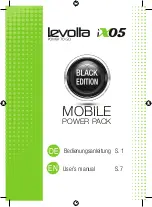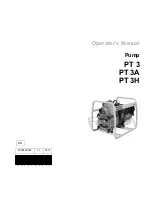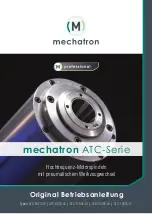
To order parts and supplies: 800.343.9353 >> eastwood.com
7
BENDING BRAKE
Set-Up
With careful planning, measuring and cutting, many complex sheet metal forms such and boxes, pans, channels and ribs can be created with the Eastwood
3-in-1 unit.
NOTE:
The factory installed Finger array consists of 1 x 1”, 1 x 2”, 1 x 3” & 1 x 6”, 1 x 8”, & 1 x 10”. In all they total 30”. To configure the Brake:
- Select the Finger width or combination of Fingers
(N)
required to bend the desired width of Sheetmetal.
- Add or delete Fingers as required by loosening the 6mm Socket Head Cap Screws to remove Fingers
(FIG 5)
.
- To add Fingers back in to achieve a desired width, set in place and secure with a Socket Head Cap Screw and securely tighten with a
6mm Hex Key (not included).
Adjustments
NOTE:
Several adjustments must be made prior to bending metal.
• Adjust Finger Alignment – The Fingers need to be aligned squarely to one another and the lower machined edge of the Finger Bar
(P)
.
- To adjust, loosen the socket head cap screws retaining the Fingers with a 6mm Hex Key (not included).
- Move Fingers so the top edges are square to the Finger Bar
(P)
and the sides are square to adjoining Fingers
(FIG 5)
.
A word about Bend Radius:
Every gauge and type of sheetmetal has a minimum Bend Radius. If an attempt is made to bend that metal sharper than the
allowable Bend Radius, it will fatigue and crack. It is best to consult an online table or a Machinery’s Handbook for the proper Bend Radius however a good
“rule-of-thumb” to employ is never set the distance of the Knife-edge of the Fingers any less than 1-1/2 X the thickness of the metal being bent.
• Adjust Finger Bar for Metal Thickness – The Finger Bar
(P)
needs to raise or lower the attached Fingers as needed to accommodate the thickness of
the selected sheetmetal.
- To adjust, using a 6mm Hex Key (not included), loosen the two Socket Head Cap Screws
(O)
in the slotted recesses of the Side Frame
(FIGS 1 & 5)
.
- Using an 18mm wrench (not included) rotate the Adjustment Screws
(Q)
Counter-Clockwise to raise the Finger Bar
(P)
(for thicker material) or rotate it
Clockwise to lower it (for thinner material)
(FIG 5)
.
NOTE:
Be sure to count the required turns to raise/lower the Adjustment Screws
(Q)
an equal amount
on the opposite side.
- When done, use a feeler gauge at several locations between the knife-edge of the Fingers and the Moving Blade/Brake Bar
(F)
to verify metal gauge
adjustments.
NOTE:
The proper gap will clamp the Sheetmetal just tight enough to prevent movement when bending yet not so tight as to generate
excess effort in the Handle.
P
FIG. 5
N
F
E
N
N
✓
2”
3”
1”
O
6”
✓
✓
✓
✓
✓
✓






























